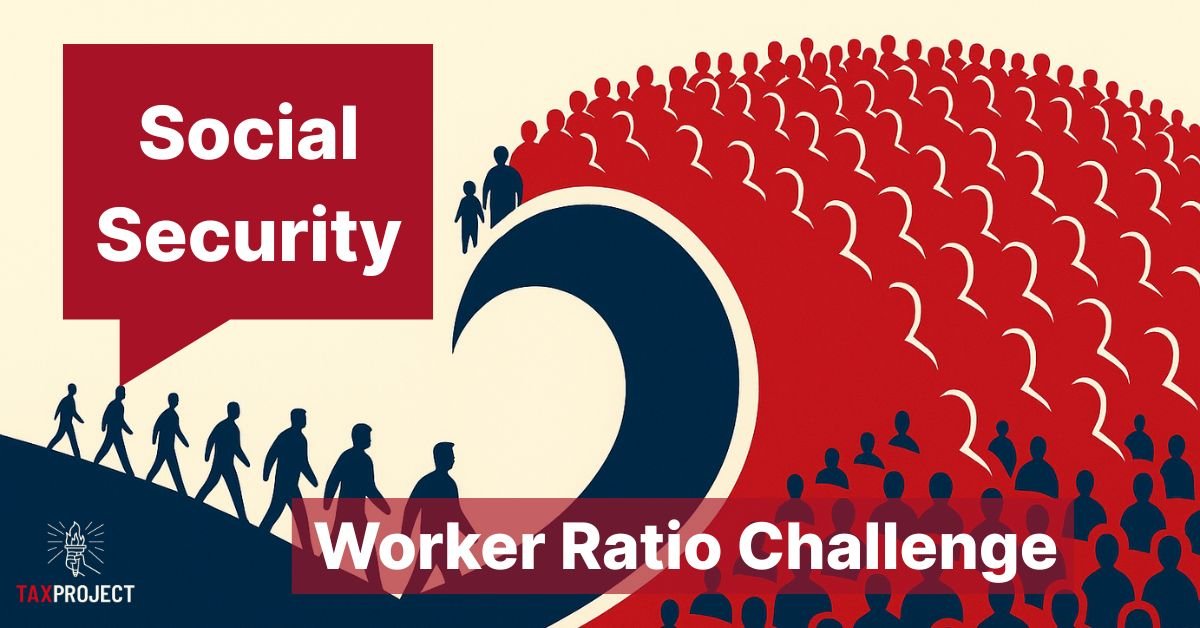Government Shutdown in plain English
As of 2:01 am ET, Oct 1, 2025 the Federal Government is “shutdown.” That may sound scary, especially for those who depend on Federal services, however a Federal shutdown is not just an on/off switch. Many parts of the Federal Government, and all State, and Local Government remain open. So basically, a Federal “Shutdown” doesn’t mean the government disappears. It means Congress didn’t pass the annual funding bills (or stop-gap spending measures) on time, so some activities must pause until funding resumes. This happens from time to time and is temporary. This article provides a simple guide to help you understand what continues, what closes, and what runs at reduced service. Where helpful, each item notes whether it’s Mandatory (paid automatically by permanent law), Discretionary (normally needs a yearly appropriation), or Fee-funded/Other (runs on fees or multi-year/no-year funds). For a deeper background on spending types, see our explainer on mandatory vs discretionary vs entitlements, and for how funding normally works, see our Federal Budget process overview.
Guiding Government Principles
Here are the rough guidelines for how the Federal Government operates. About 70% of the budget is mandated by statute (law), and continues automatically. The Discretionary budget is what is in jeopardy during a shutdown, and in general most critical functions are setup to continue.
- By law, Federal agencies can’t spend money without an appropriation (Antideficiency Act). Limited exceptions allow operations that protect life and property, fulfill constitutional duties, or are otherwise authorized by law.
- Programs with permanent (mandatory) funding, multi-year/no-year money, or legally available fees can generally continue. Each department publishes a “lapse plan” that spells this out.
OPEN (operating normally or near normal)
Social Security, SSI, Medicare, Medicaid, and CHIP (Mandatory)
Monthly benefit payments continue because these programs are funded by permanent law and trust funds, not the annual spending bills at issue. Field offices and call centers may be short-staffed, so expect slower customer service, but checks and covered health services continue. [1][2]
U.S. Postal Service (Fee-funded/Other)
Post offices stay open and mail runs on schedule. USPS finances operations mainly through postage and product revenue rather than annual appropriations. [3]
Air Travel Safety and Security (FAA air traffic control; TSA screening) (Discretionary) (excepted)
Flights continue. Air traffic controllers (Federal Aviation Administration) and Transportation Security Administration screeners work to protect life and property. You may see delays if support staff are furloughed. [4]
Homeland security basics (border, tariffs; disaster response; immigration services) (Mixed)
U.S. Customs and Border Protection continues inspections and tariff collection, the Federal Emergency Management Agency continues disaster payments, and many U.S. Citizenship and Immigration Services functions continue because they’re fee-funded. [5]
Passports and Visas (Fee-funded/Other)
The Department of State can continue a range of consular services funded by fees. Availability varies by embassy/consulate; plan for backlogs. [6]
Internal Revenue Service (Multi-year funds)
The IRS has multi-year funding under recent law and announced it will continue operations at least through the initial business days of the lapse (filing, refunds, enforcement, and phones). If the lapse is prolonged, watch for updated notices. [7]
Defense (Military operations) (Discretionary) (excepted)
Active-duty military continue to report for duty. Certain civilian personnel supporting protection of life/property or critical missions also continue; other civilian roles may be furloughed. Pay may be delayed until Congress acts, but operations (training, deployments, ongoing missions) continue under the Department of Defense’s lapse guidance. [8][9]
Debt Service (Mandatory)
Net Interest payments on the National Debt continue by statute, no risk of default.
PAUSED OR REDUCED (still there, but slower or narrower)
National parks, monuments, and public lands (Discretionary)
Many park units aim to keep basic access to open-air areas (roads, trails, memorials) where it’s safe, sometimes using limited recreation fee balances, while visitor centers, tours, and most programming pause. Conditions vary by park; services like trash, bathrooms, and rescues may be minimal. Check your park’s alerts before traveling. [10]
Economic statistics, many Grants, and routine Federal Agency services (Discretionary)
Non-emergency activity at departments such as Education, Labor, Commerce, Environmental Protection Agency, and Interior often scales down: new grants, routine guidance, some inspections, and many back-office services pause or slow until funding resumes. Each agency posts a contingency (“lapse”) plan with specifics. [11]
SNAP and WIC nutrition programs (Primarily Mandatory)
Supplemental Nutrition Assistance Program (SNAP) benefits are generally issued on schedule due to mandatory funding and advance planning; Special Supplemental Nutrition Program for Women, Infants, and Children (WIC) can rely on limited contingency funds but is more vulnerable in a prolonged lapse. Check the U.S. Department of Agriculture updates for your state. [12]
TANF Assistance (Temporary Assistance for Needy Families) (Mandatory)
TANF is a federally funded, state-run program that provides cash aid and work supports to low-income families with children. In shutdowns, states often continue TANF using prior-year federal funds on hand and state “maintenance-of-effort” dollars, but administrative processes at the federal level can slow and a very long lapse can strain state cash-flow. For current status, check your state human services agency and the federal Office of Family Assistance. [13][14]
Federal courts (Fees/carryover & Discretionary)
Federal courts typically remain open initially using fee balances and carryover funds, then tighten operations if a lapse lasts. Check your district/circuit court’s website for local notices (Administrative Office of the U.S. Courts). (General framework summarized in CRS.) [15]
Federal worker pay and services (Varies by function)
Many “excepted” employees work without pay (back pay typically follows under current law); others are furloughed and stop work. The Office of Personnel Management posts guidance for agencies and employees. [16]
CLOSED (fully halted unless tied to excepted activities)
Activities that rely only on annual discretionary funds and are not excepted
Examples include most routine agency trainings, many museum operations, some research labs, and new grant awards. They pause entirely until funding resumes. For program-by-program detail, consult each agency’s posted plan. [11]
Important context (State and Local Government services)
A federal shutdown is about federal appropriations. State and local governments remain open, and community services like most public schools, city services, state colleges, and local public safety continue to operate. Some state/local programs that depend heavily on federal grants can feel indirect effects if a lapse lasts, but day-to-day state/local government is not shut down by a federal lapse. [17]
Quick reference during Shutdown
- Benefits: Social Security, Supplemental Security Income (SSI), Medicare/Medicaid, and Children’s Health Insurance Program (CHIP) continue; expect slower phones/appointments. [1][2]
- Travel: Flights, air traffic control (FAA), and airport screening (TSA) continue; build in extra time. [4]
- Parks: Assume limited services; check park alerts before you go. [10]
- Passports/Visas: Many services continue (fee-funded). Verify appointment status at travel.state.gov. [6]
- TANF: Payments commonly continue via state administration and available funds; confirm with your state human services agency. [13][14]
- Military/Defense: Operations continue; some civilians furloughed; pay subject to later congressional action. [8][9]
Shutdowns are disruptive, but they end when Congress passes new funding or a short-term extension. Until then, the rules above should help you navigate what’s open, what’s closed, and what’s simply slowed.
Citations & Authoritative References
- Social Security Administration – Contingency Plan (PDF). https://www.ssa.gov/agency/shutdown/materials/contingency-plan-10-01-25.pdf
- Congressional Research Service – Government Shutdowns and Executive Branch Operations (Sept 2, 2025). https://www.congress.gov/crs_external_products/R/PDF/R47693/R47693.5.pdf
- U.S. Postal Service – “Postal Service not affected by a government shutdown” (Sept 25, 2025). https://about.usps.com/newsroom/statements/092525-postal-service-not-affected-by-a-government-shutdown.htm
- U.S. Department of Transportation / FAA – Shutdown impacts and staffing (news coverage citing DOT plan, Sept 30, 2025). https://www.reuters.com/business/world-at-work/faa-would-furlough-11000-employees-us-government-shutdown-2025-09-30/
- Department of Homeland Security – CBP tariffs, FEMA payments, and USCIS fee-funded operations continue (shutdown guidance). https://www.reuters.com/world/us/us-tariff-collections-continue-through-government-shutdown-dhs-says-2025-09-30/
- U.S. Department of State – Guidance on operations during a lapse in appropriations (consular services). https://www.state.gov/wp-content/uploads/2025/09/DOS-Lapse-Guidance-updated-29-September-2025.pdf
- U.S. Department of the Treasury (IRS) – IRS FY2026 Lapse in Appropriations Contingency Plan. https://home.treasury.gov/system/files/266/Treasury_IRS_Lapse_Plan.pdf
- Department of Defense – Contingency Plan Guidance for Continuation of Operations in the Absence of Appropriations (Sept 2025). https://media.defense.gov/2025/Sep/27/2003809363/-1/-1/1/CONTINGENCY-PLAN-GUIDANCE-FOR-CONTINUATION-OF-OPERATIONS-IN-THE-ABSENCE-OF-APPROPRIATIONS.PDF
- Defense.gov – Lapse in Appropriations notice (Oct 1, 2025). https://www.defense.gov/
- National Park Service / Interior – Approach to keeping some areas accessible with limited services (news coverage). https://www.politico.com/news/2025/09/30/national-parks-will-remain-mostly-open-in-shutdown-main-00589074
- Federal News Network – Agency-by-agency contingency plan roundup (with links to official plans). https://federalnewsnetwork.com/government-shutdown/2025/09/heres-a-look-at-federal-agencies-contingency-plans-as-shutdown-looms/
- U.S. Department of Agriculture – Expected effects on nutrition programs during a lapse (news coverage summarizing USDA planning). https://www.reuters.com/world/us/how-us-government-shutdown-would-affect-usda-data-nutrition-programs-operations-2025-09-30/
- Administration for Children and Families (HHS) – TANF program overview (Office of Family Assistance). https://www.acf.hhs.gov/ofa/programs/tanf
- State guidance example (Hawaii Budget & Finance) – How states may continue TANF using unspent federal funds and state MOE during a lapse. https://budget.hawaii.gov/wp-content/uploads/2024/12/FM-24-18-Preparing-for-a-Potential-Federal-Government-Shutdown.conformed.pdf
- Judiciary operations – General posture during lapses (summarized in CRS). https://www.congress.gov/crs_external_products/R/PDF/R47693/R47693.5.pdf
- U.S. Office of Personnel Management – Guidance for shutdown furloughs (Sep 28, 2025). https://www.opm.gov/policy-data-oversight/pay-leave/reference-materials/guidance-for-shutdown-furloughs-sep-28-2025/
- Congressional Research Service – Federal vs state/local scope of shutdowns (federal shutdown affects federal operations; indirect effects vary). https://www.congress.gov/crs_external_products/R/PDF/R47693/R47693.5.pdf











